My friend Erik took a trip to Texas last year to collect a (mainly) Texas native tree, the cedar elm.
He was invited by a dude who owns a ranch (not a dude ranch, it was just a guy with a ranch) to come collect as many elm trees as he could.
So Erik packed up, took along Little Mike, and drove from Ft. Myers Florida all the way to East Texas.
Erik is somewhat passionate about collecting.
That’s a long drive.
A long, long drive.
In the cold.
Alone with Little Mike even.
Digging in rocky scrubland on a ranch in Texas. In the cold (to a south Florida boy like Erik).
Of course, I’d do it in a heartbeat too.
But, I obviously didn’t, so I had to buy one.
This one, in fact-

It spoke to me.
Ha ha!
It has nice movement and a decent base:
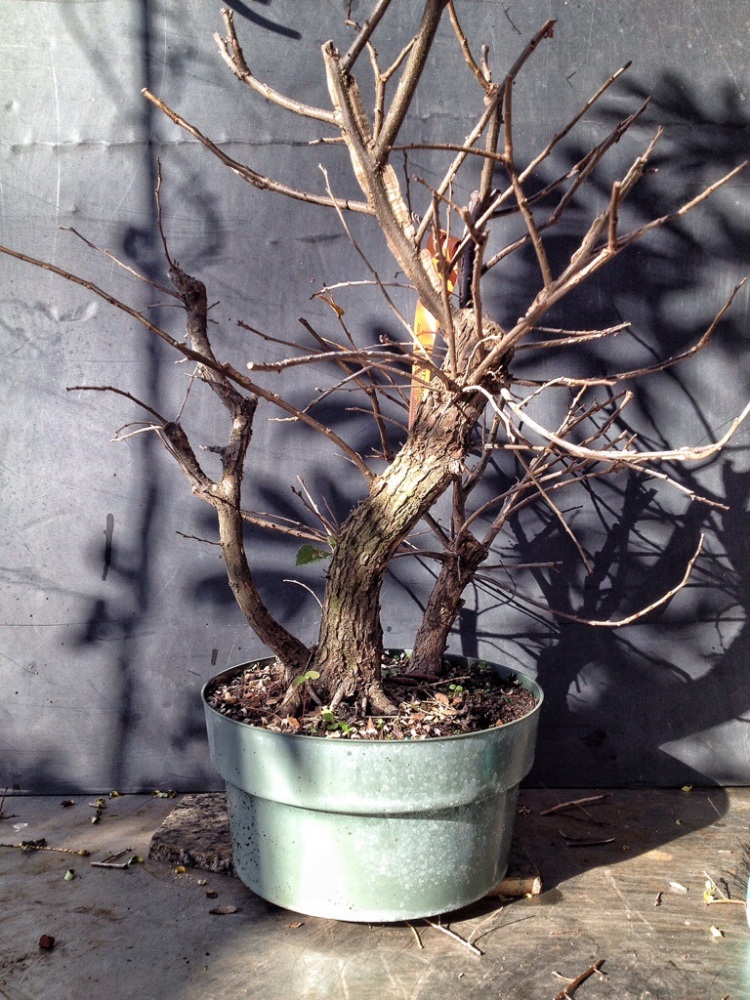
It seems like four trees connected at the base.
Obviously, four is a bad number of trees to use.
Three is good and five is good as well.
Even two, the ultimate even number, is better than four.
It’s just the law of the universe that four is bad.
Really, if I’m lyin’, I’m cryin’.
Trust me.
It’s just true.
Ok
Alright
I suppose I should explain why.
First, in Japan (Japan is where we really get most of our traditions, like it or not) the number four is pronounced “shi” which is similar in sound to the word death (死 – death).
Therefore, it is considered unlucky.
And definitely unlucky to have four trees (Hello? Death….trees..) in an arraignment.
Do you need another reason?
One not steeped in tradition and superstition?
Sure…?
Aesthetically, an even number is not ideal in a design because the human brain (to whom or what we are trying to garner attention from) has a tendency to organize units (trees) into pairs, and by using an odd number, the eye is continually pairing up trees, causing you to keep looking around at the composition. The brain just won’t let that odd tree stand alone if there are other trees near it.
Continually moving the eyes is what you want, as an artist, your viewer to do: it means they are looking at your art.
Ok, enough learning, back to the tree.
So we have four trunks.
I had considered being my usual contrarian self and keep all four of them but, after several brief and fleeting contemplative moments, I chopped off the smallest one.

It’s a bit pencil like and not at all in the character of the two main trees.
Now there are three.
Breath easy comrades, the order of the universe, imperiled by my foolhardy flirtation with the chaotic, individualistic arrogance I am usually drawn to, has been restored.
Drawn back from the brink, so to say, by this one straight and uninteresting trunk.
Which must now be chopped off.
Ironical and everything, isn’t it.
Righty-o!
A few snips here and there:
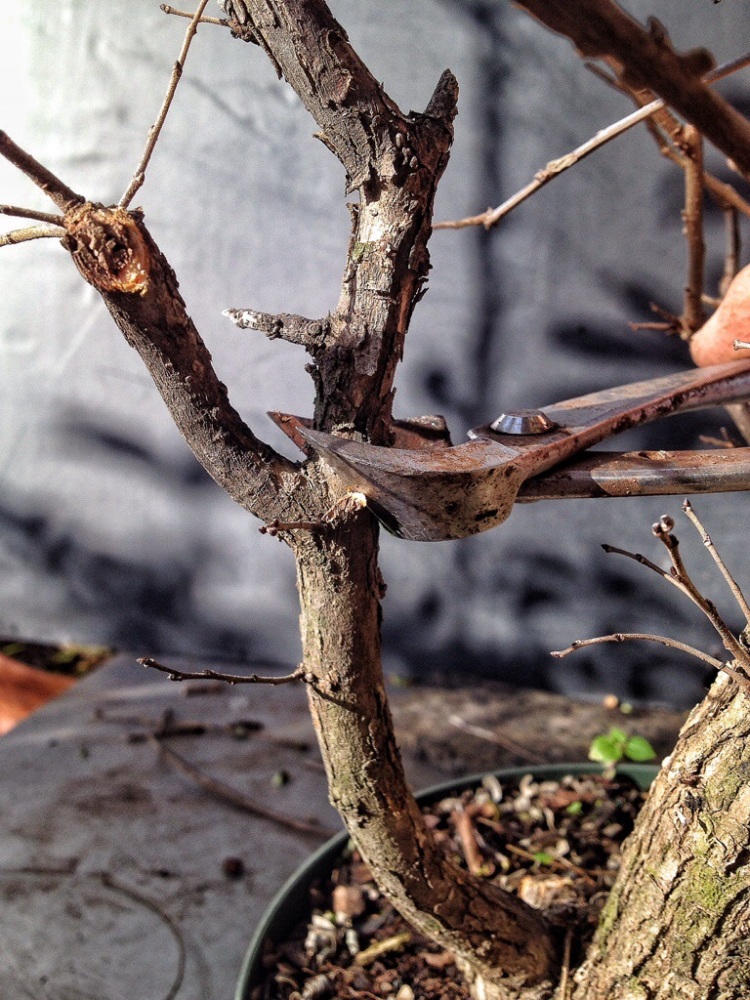

Now let’s talk about the cedar elm.
Ulmus crassifolia:
Native to (mostly) East Texas but also Louisiana, Mississippi, Arkansas, Oklahoma, and some populations in Tennessee and northern Florida.
And there’s even some crossover into Mexico.
The common name, cedar elm, has nothing to do with anything particularly cedar-ish about its morphology. They just happen to grow in areas called cedar flats (places where junipers grow that are flat, I guess).
Ulmus means elm and crassifolia means rough leaves (“crass”-how I am after too many beers and “folia”-leaves, what my wife does to me after too many beers)
The bark gets craggy and old looking on young trees; an ideal we strive for.
They bud back profusely (more on that in a moment) and they live after being collected, a definite plus. The roots are very aggressive (more on that later too).
If you were examining the above pics closely, you noticed the profuse and unfortunate amount of shoots on the cut end of the bigger tree.

I’ll have to do something about that knob that’s grown on the end.
It seems that it’s seriously wanting to grow a new top.
My first challenge is trying to reduce the reverse taper caused by all those shoots.

I could use my power carving tools but my concave cutters and a pocket knife are adequate to this job.
How’s this?
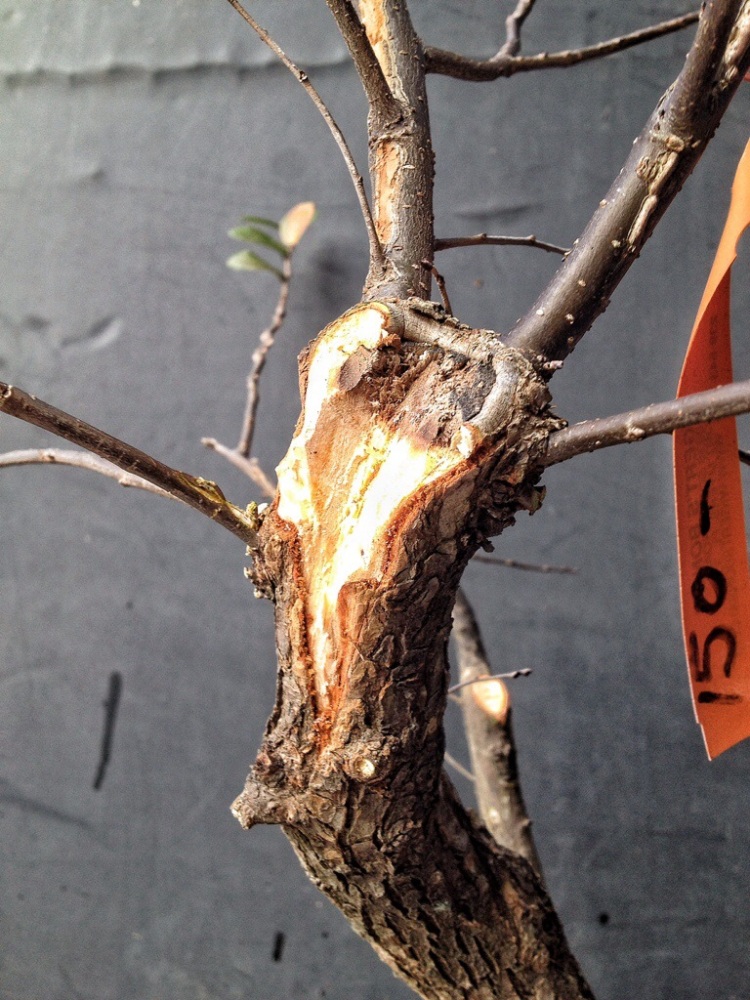
I think it’ll do.
Now for the wire.
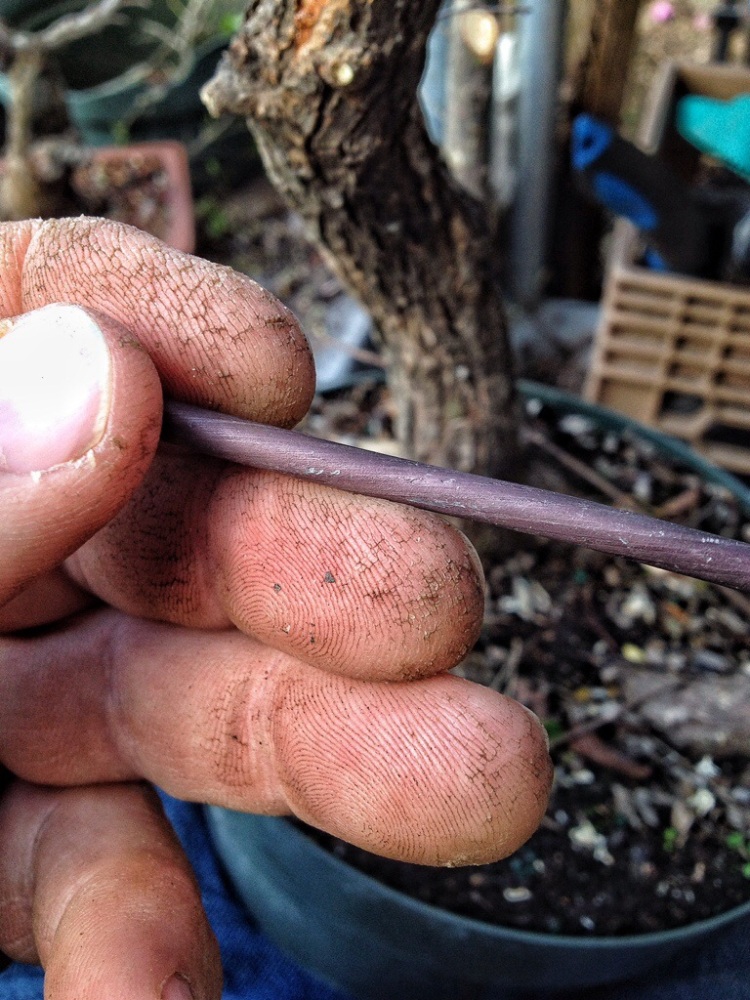
Pretty thick but not enough.
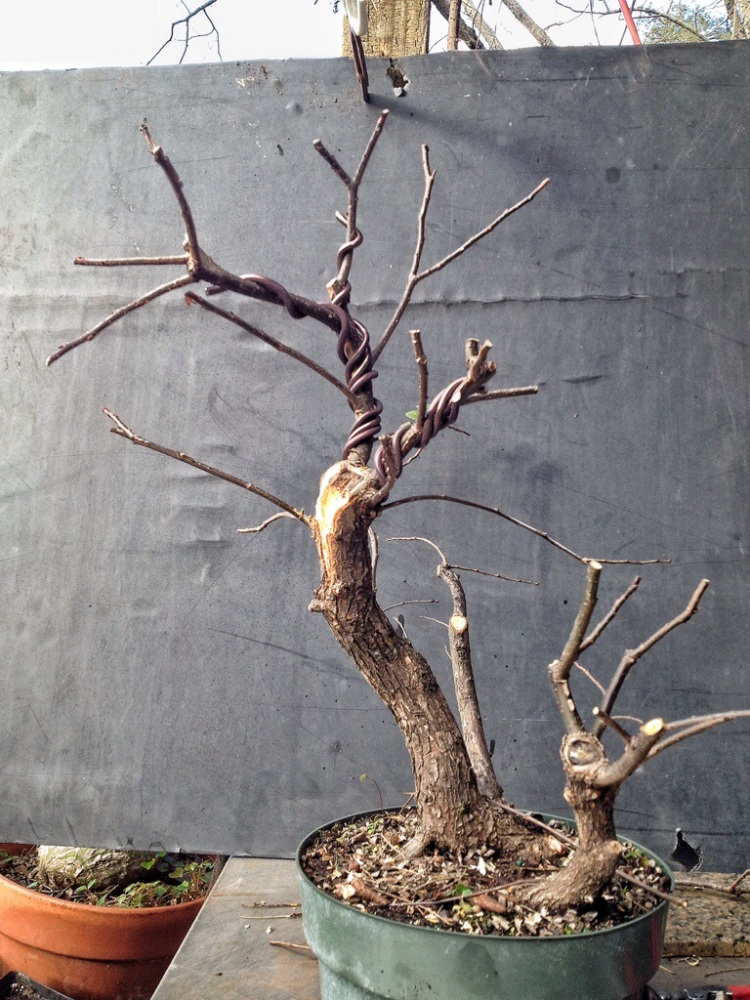
Was I able to move the branches?

Of course.
But the main bending I did was simply to move the top forward.
Which isn’t really evident by the pic.
You’ll have to take my word for it.
Now the roots.
Remember now that this tree was collected just last year.

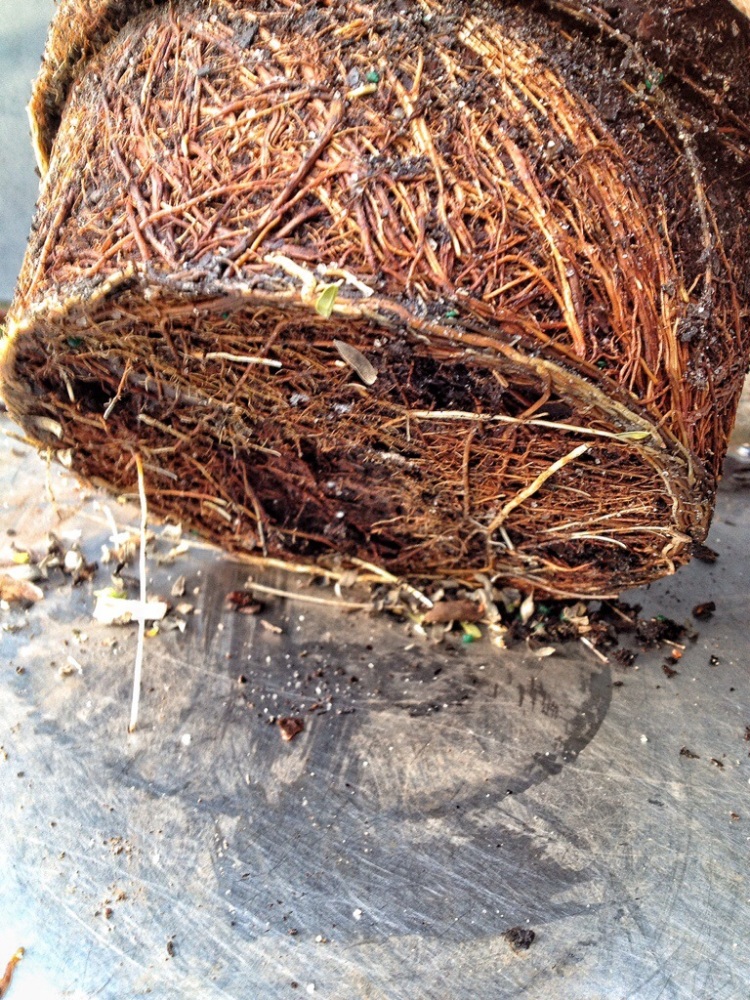
So either Erik is a magician or this type of elm is really suited for collecting.
It’s probably both.
Or this one might have been collected by Little Mike.
In that case we would have to call him Magic Mike.
Naaaaaah!
(Just kidding Mike. He’s a very talented bonsai artist. Follow him on Instagram at @mikelaneshohinstudio )
I’m getting excited now, I get to try out my serial killer gloves.
Extra thick with Kung Fu grip, stylishly black in color and, amazingly, smartphone touchscreen compatible.

The roots are so tough I had to break out the metal tools.
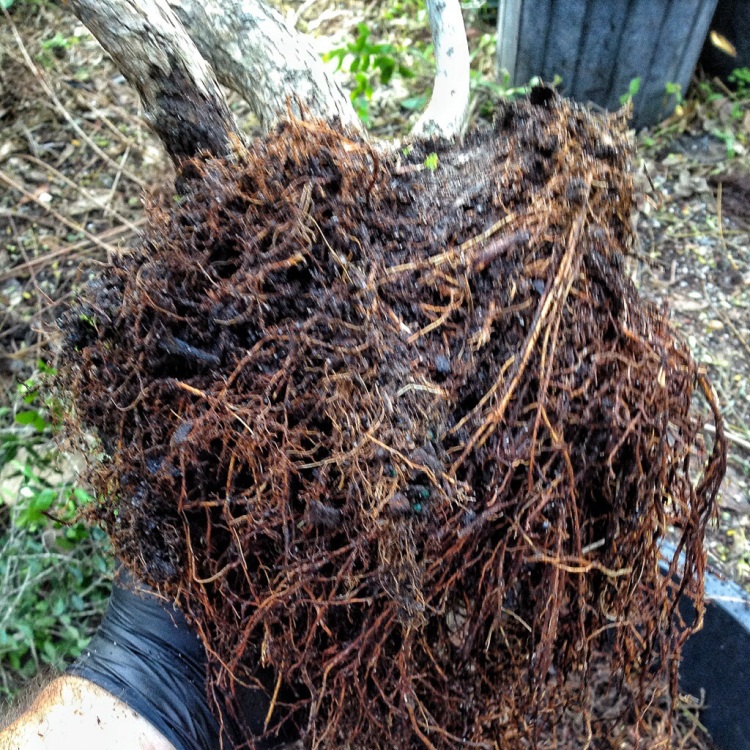
It’s just amazing to me how profuse these roots are.
When we collect trees like this they literally (the original meaning of literally and not today’s meaning. Literally the literal definition of literally) look like this:

We cut the tap root out and cut the lateral roots flat.
This elm threw roots on every cut-
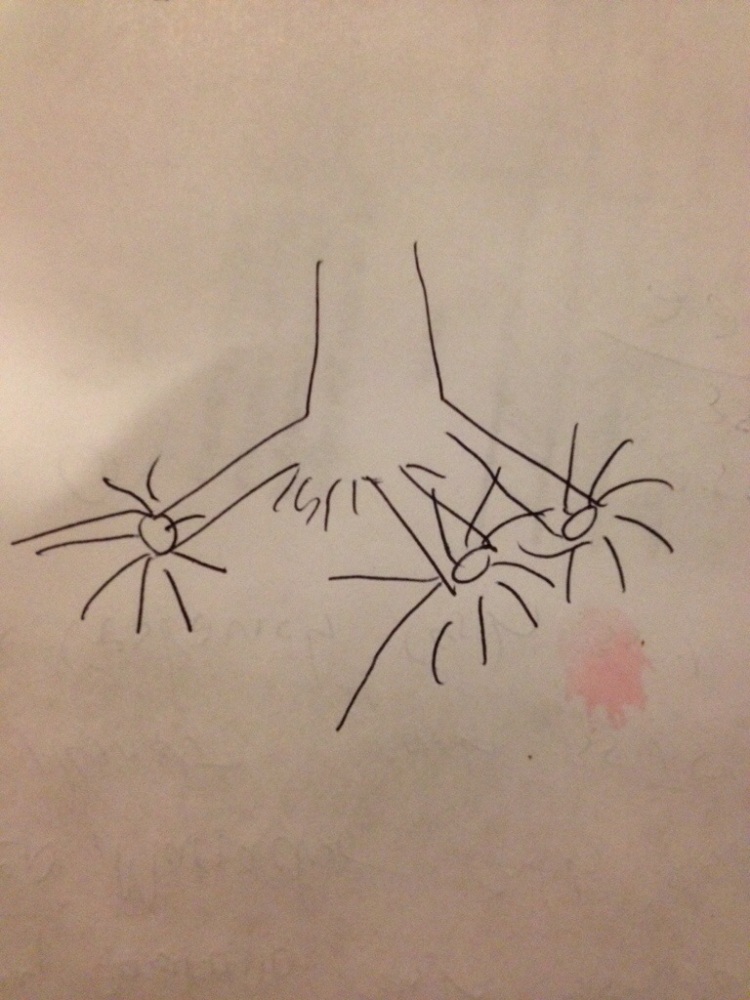
In my research I found a reference that the best way to get a cedar elm was collection from the wild.
I would agree if only from the evidence of this tree but I have also seen all the elms Erik collected and he didn’t even put them into soil until he got back to Florida.
Literally.
Hmmmnnn, look here, some genuine Texas dirt-
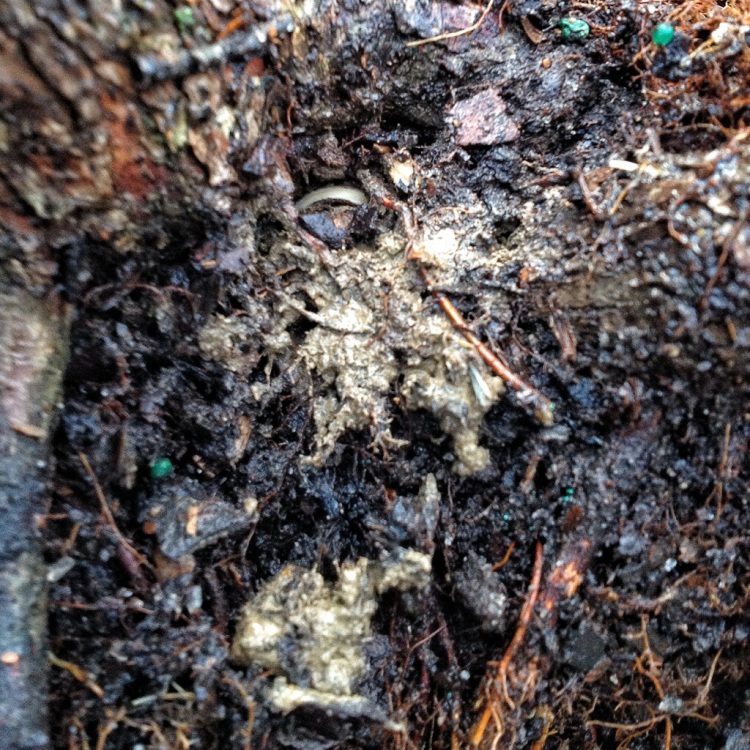
Cool.
But the most interesting thing is this, what I thought was one tree with multiple trunks is actually two trees.
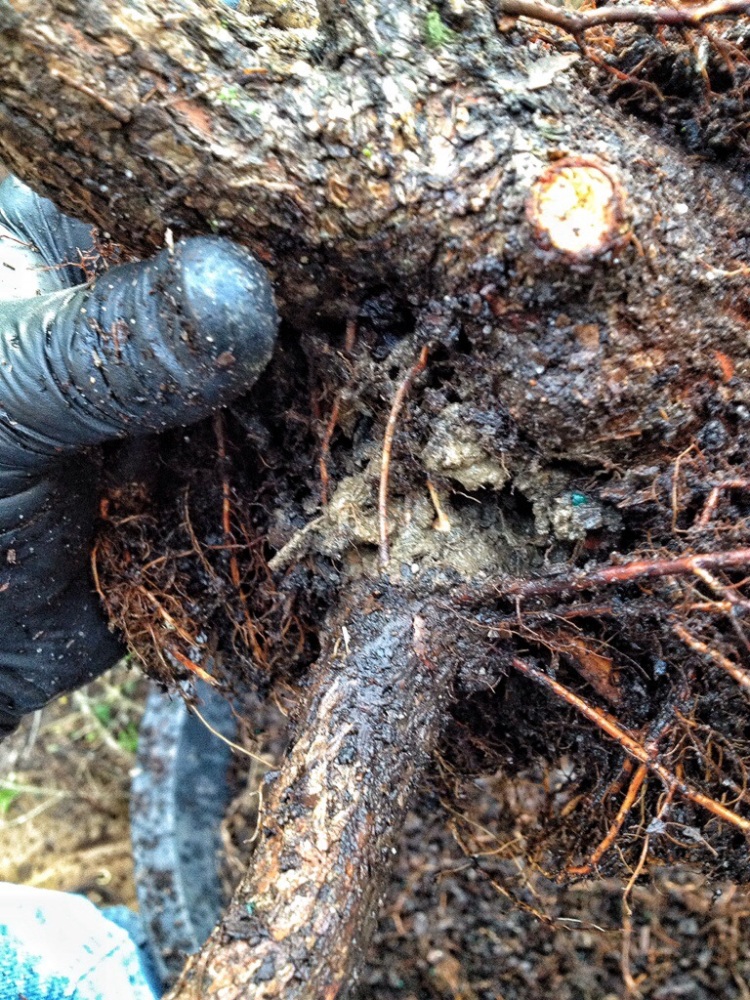
I think I’ll separate them.
First, that little one on the back has a root on it.
I think I can turn it into another tree.
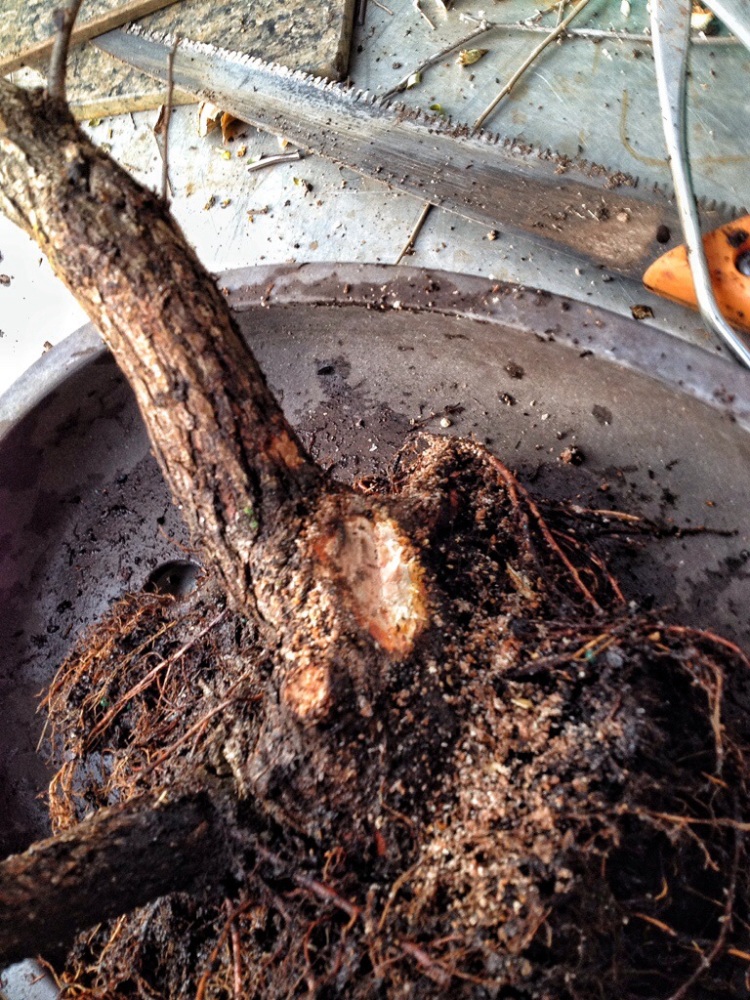 </a
</a
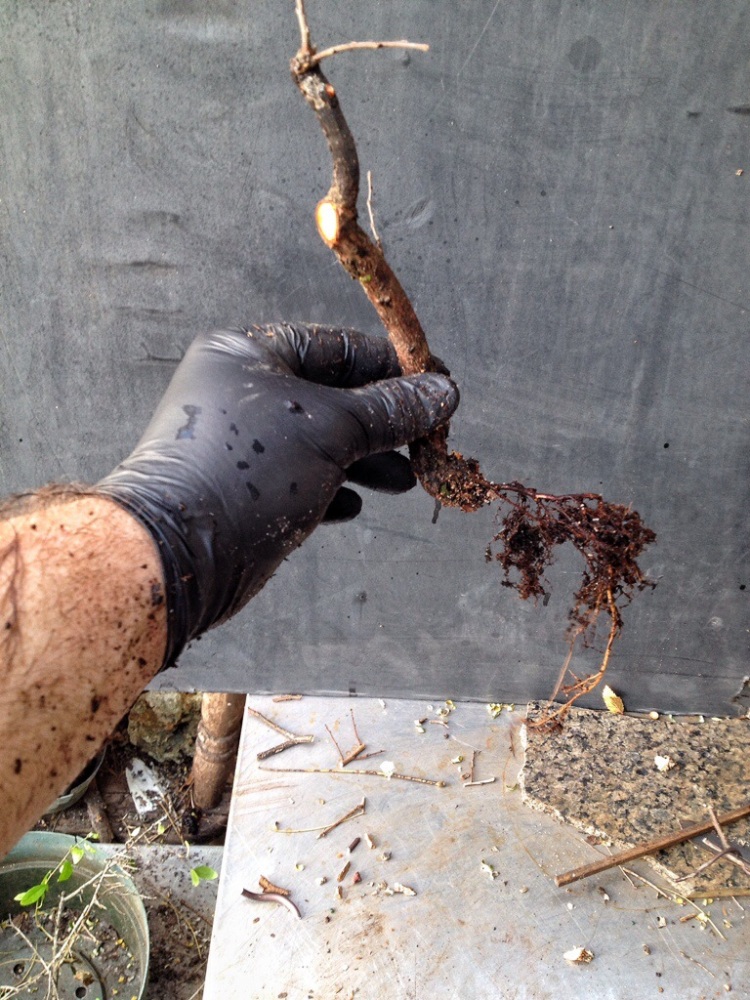
I think it will work and, considering the roots this tree puts out, will thrive.
Next, a little twist and….

One little tree-

With some root pruning I was able to get some root cuttings (since I’m not going to Texas anytime soon and I would like more of these trees)

And the big tree.
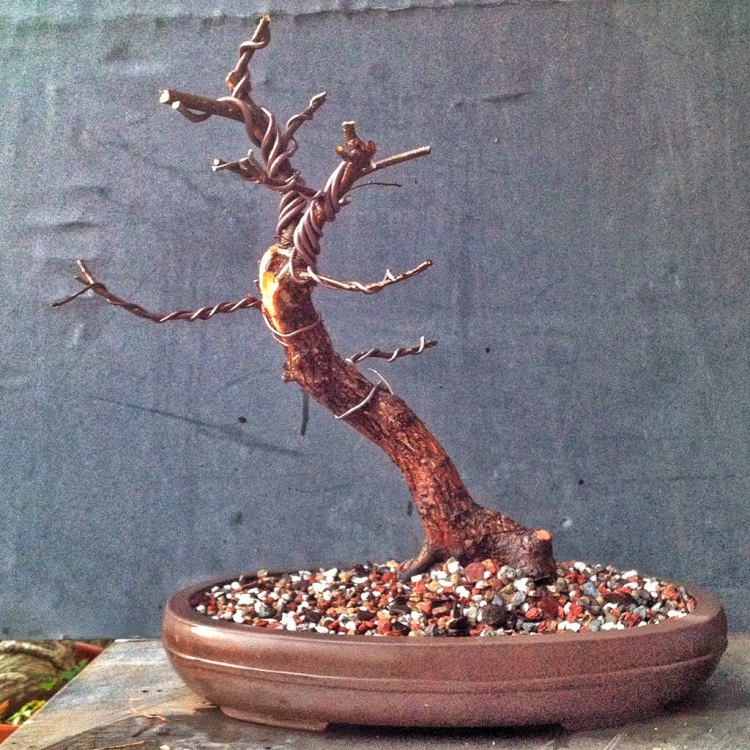
I began with a four tree clump and ended with a shohin, a chuhin, a little starter tree to grow out and some root cuttings.
Not bad.
Before-

And after-
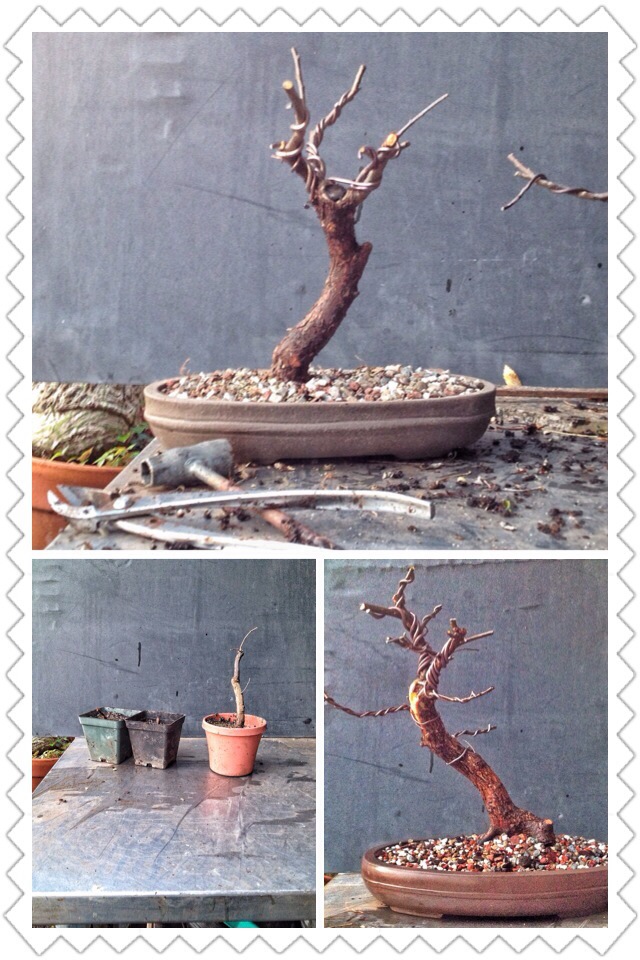
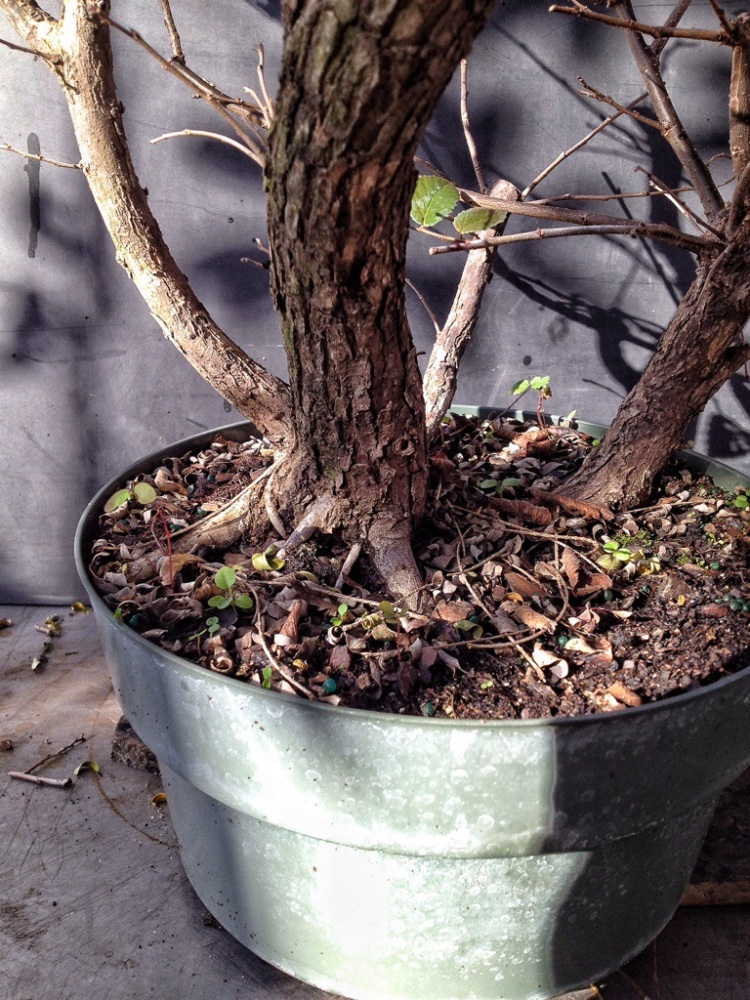
Nice! Like how you turned one into many.. You have some feminine qualities there. LOL!
LikeLike
Beer drinking promotes leaves! She leaves! Nice job!
LikeLike
Good presentation. You are a good teacher.
LikeLike
Thanks Earl
LikeLike
I won mine at the open house. Mike designed it. It’s not potted yet. Your presentation excites me. I should get a life but that’s another issue. I guess it’s not too early to pot it. Have I guessed right?
BigElvis
LikeLike
Do it now before it leads out
LikeLike
I live in central texas, this tree is very easy to collect, I’ve collected several with caliper over 3 inches. Seeing as how you are in Florida, I propose to trade you a large cedar elm for a joewood. Btw I enjoy the blog. You are the sense of humor this hobby desperately needs. So many of the bonsai congnescenti are irritatingly serious and condescending. Keep up the good work brother
LikeLike